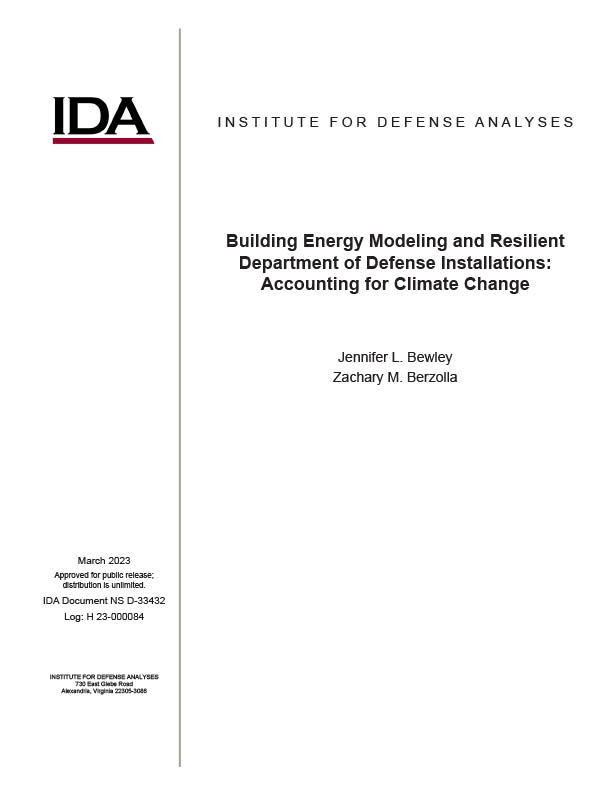Building Energy Modeling and Resilient Department of Defense Installations: Accounting for Climate Change
March, 2023
IDA document: D-33432
FFRDC: Systems and Analyses Center
Type: Documents,
Energy-Environment
Division: Science and Technology Division,
Science, Systems and Sustainment Division
Authors:
IDA document: D-33432
FFRDC: Systems and Analyses Center
Type: Documents
Division: Science and Technology Division
Authors:
Authors
Jennifer L. Bewley, Zachary M. Berzolla
See more authors

